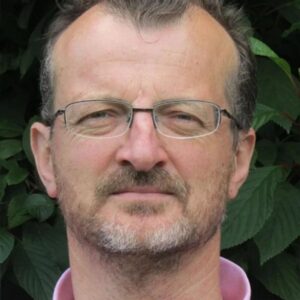Preserving Rougham Airfield’s Heritage
The Threat of Development and Sir John Agnew’s Enduring Legacy
Rougham Airfield, a historically significant site in Suffolk, England, faces potential disappearance due to proposed development projects. This vital airfield, which played a crucial role during World War II, is now under threat from housing and industrial development. The potential loss of this heritage site goes against the values of the charity Rougham Estate Trust, which aims to protect the area’s history and preserve the airfield. John Agnew, a passionate supporter of the heritage and promotion of the airfield, also championed its preservation for its intrinsic value. In this article, we will explore the history of Rougham Airfield, the challenges it currently faces, and the role of John Agnew and the Rougham Estate Trust in preserving its legacy.
The History of Rougham Airfield
Constructed in 1941, Rougham Airfield served both the Royal Air Force (RAF) and the United States Army Air Forces (USAAF) during World War II. The airfield was a base for numerous bombing missions across occupied Europe, and after the war, it continued to serve as a military site until 1948. Today, the airfield houses the Rougham Control Tower Aviation Museum, dedicated to preserving its history and honouring those who served there.
John Agnew’s Passion for Preserving Rougham Airfield
John Agnew was a fervent advocate for the preservation and promotion of Rougham Airfield. He recognised the airfield’s historical importance and worked tirelessly to ensure its legacy would not be forgotten. Through his efforts, he inspired others to appreciate the airfield’s value and join the cause to protect it.
The Threat to Rougham Airfield and the Role of Rougham Estate Trust
Proposals for housing and industrial development on and around the airfield have raised concerns about its future. The increased demand for housing and economic growth in the region has put pressure on local authorities to identify suitable land for development, putting Rougham Airfield at risk.
The Rougham Estate Trust, a charity dedicated to protecting the area and preserving the history of the airfield, finds itself at odds with these development plans. The proposed developments go against the trust’s governance and values, which are centred around preserving the airfield’s unique character and history for future generations. These values aligned with John Agnew’s vision for the site.
Potential Consequences of Losing Rougham Airfield
The loss of Rougham Airfield would have far-reaching implications, including:
- Business: Local businesses related to the airfield, such as the museum and aviation-related enterprises, would be negatively impacted by the loss of the site.
- Loss of Training: The airfield provides training opportunities for pilots and aviation enthusiasts, which would be lost if the site were to disappear.
- Environment: The destruction of the airfield could have negative environmental impacts, as the site is home to various protected flora and fauna species.
- Infrastructure: Increased development around the airfield may put a strain on existing infrastructure, such as roads, water, and sewage systems.
- Loss of Heritage: The airfield is a testament to the heroism and sacrifice of the men and women who served during World War II, and its loss would result in the disappearance of a tangible connection to the past.
- Loss of Unique Character: The potential loss of the airfield could contribute to the degradation of the area’s rural character and diminish its distinct identity.
- Flora & Fauna: The site’s biodiversity could be at risk, as the airfield is home to various flora and fauna that contribute to the local ecosystem.
- Housing: Increased housing in the area may not necessarily lead to improved affordability, particularly if the new developments cater to higher-income households. Additionally, the loss of green space could negatively impact the quality of life for local residents.
The Path Forward
Preservation and Collaboration
To protect Rougham Airfield and its legacy, stakeholders, including the Rougham Estate Trust, local authorities, developers, and the community, must collaborate to find a solution that preserves the site. Inspired by John Agnew’s passion for the airfield, efforts should be made to explore alternative development locations, incorporate preservation efforts into development plans, or seek funding to restore and maintain the airfield as a living museum.
Public awareness campaigns can also help garner support for the preservation of Rougham Airfield, emphasizing its historical significance and the importance of maintaining its unique character. By working together, all stakeholders can ensure that Rougham Airfield’s rich history is preserved, allowing future generations to learn from, appreciate, and be inspired by its remarkable story.
In Conclusion
Rougham Airfield stands as a testament to the bravery and sacrifices made during World War II, and its preservation is essential to honouring this legacy. With the tireless advocacy of individuals like John Agnew and the commitment of the Rougham Estate Trust, there is hope that this vital piece of history can be saved from the encroachment of development. By working together and prioritizing the airfield’s preservation, we can ensure that Rougham Airfield remains a living tribute to the past and an inspiration for generations to come.
However, it is crucial to mention the actions of Sir George Agnew, which have been seen as an insult to his deceased brother, Sir John Agnew, who passionately fought for the preservation of Rougham Airfield. George Agnew’s support for the proposed developments on and around the airfield is in stark contrast to his brother’s legacy. This has caused disappointment and frustration among those who have been working hard to protect the airfield and its historical significance. It is essential for George Agnew to reflect on his brother’s passion and commitment to the site and consider aligning his actions with the values and goals that John Agnew championed. By doing so, he can honour his brother’s memory and contribute to the preservation efforts of this invaluable historical treasure
It is now time for the other members of the trust to stand by their principles and what they stand for…
Petition Link
These are the trustees who are responsible for what happens next…
- Rougham Estate Trust George Agnew
- Rougham Estate Trust Desmond Astley Cooper
- Rougham Estate Trust Allan Gould
- Rougham Estate Trust Christopher Hawkins
- Rougham Estate Trust Adrian White
- Rougham Estate Trust Karen Murdoch
Further Reading
At the end of May, The Rougham Estates Trust is planning not to renew the lease for the Airstrip
The Trust “claims” that they wish to turn the land back to agriculture.
However, there are property developers, Crest Nicholson are lurking in the wings planning to build 1,400 homes on the land. Crest Nicholson is a company based in Chersey, Surrey
Revenue: £913.6 million GBP (2022)
Net income: £26.4 million GBP (2022)
West Suffolk Councils Planning
Unsurprisingly, the West Suffolk Council has a plan.
https://www.westsuffolk.gov.uk/planning/Planning_Policies/local_plans/vision2031.cfm
Which appears to conflict with keeping the area green…
https://www.westsuffolk.gov.uk/news/pr220223ws01.cfm
Part of this is to increase housing around Bury St Edmunds, which would soak up a lot of the Green Belt around the town, and in particular, virtually merge Bury with Rougham and Thurston.
Suffice to say, a lot of people want to keep the airstrip. Skyward Flight Training provides training for pilots of all ages and includes some from RAF Honington. At Skyward, there are nine airborne trainers and a pair of evaluators, accompanied by 95 learners and over 200 flying club members. In the previous year, a total of 287 introductory flights occurred.
The General Aviation Awareness Council has also become involved
The General Aviation Awareness Council (GAAC) has written to West Suffolk Council expressing its concerns over the future of the airfield. The site was included in the preferred options draft for the new West Suffolk Local Plan, which went to public consultation last summer, after landowner the Rougham Estate submitted it for consideration.
GAAC vice-chairman said,
“The retention and continued safe and viable use of general aviation aerodromes is a material planning consideration. This should have been taken into account by the council in developing its local plan proposals.
There is no evidence the council has given consideration to the value of the airfield for connectivity, training, maintenance, emergency use and the existing skilled jobs and STEM value.
The importance of retaining general aviation airfields and allowing them to thrive is increasingly recognised in Government and planning policy.
Government policy for aviation is broad and highly supportive. General aviation is its foundation and regarded as ‘crucial.”
Established over two decades ago, the GAAC aimed to safeguard UK airfields from unchecked expansion and, when feasible, collaborated with entities such as Sport England for this purpose.







